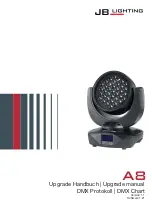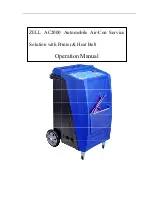
35
11. Troubleshooting
1 Troubleshooting plate heat exchangers
Problem Possible
Causes
Suggested Solutions
1.
Reduced heat transfer
a. The inlet temperatures or flow
rates do not correspond to the
original design.
b. Plate surfaces have become
fouled on either the product or
service side.
c. Freeze-up.
Correct temperatures or flow rates to design conditions.
Open the heat exchanger and clean the plates or clean the
plates (without opening) by circulating a suitable cleaning
agent or reverse flush to dislodge debris.
Correct temperatures or flow rates to design conditions.
2.
Increased pressure drop or
reduced flow rate
a. Plate surfaces have become
fouled on either the product or
service side.
b. Debris is blocking the flow
channels.
See paragraph 1(b) above.
Open the heat exchanger and clean the plates (see Section
6.0). Screens or filters must be installed to prevent debris
from entering the unit. Reverse flush to dislodge debris.
3. Visible
leakage
a.
Operating pressure exceeds
the rating of the heat
exchanger.
b.
The heat exchanger is not
tightened adequately for the
operating conditions.
c.
Sealing surfaces of plates or
gaskets maybe damaged or
dirty.
d.
Chemical attack on the
gaskets.
Reduce the operating pressure to the rating of the heat
exchanger. If the unit continues to leak after the pressure is
reduced, the plates or gaskets might be damaged or gaskets
aged and may require replacement.
Tighten the heat exchanger further in increments of .001 inch
(0.025 mm) per plate, checking for leakage each time. Do
not tighten below the minimum dimensions given in the
general arrangement drawing. If leaks continue, see
paragraph below.
Open the heat exchanger and inspect the plates and gaskets.
There must not be any cuts, cracks, debris or flat spots on
the gaskets. Glue free gaskets must not have any debris
under the gasket. The plates must be clean and free of
heavy scratches or dents on both sides. Replace any
defective parts.
Identify the source of chemical attack and correct either by
eliminating the corrosive agent or changing the material of
the gaskets.
4. Cross-contamination
a.
Cracks in one or more plates.
These may be caused by
fatigue resulting from pressure
fluctuations during operation.
b.
Holes in the plates caused by
corrosion.
Open the heat exchanger and inspect the plates. Replace
the defective parts. Identify the source of pressure
fluctuations and correct.
Dye-penetrant or alternative in situ testing may be required to
identify cracks in the plates. If this is the case, refer to
Factory Service.
Identify the source of corrosion and correct by either
eliminating the corrosive agent or changing the material of
the plates.
Содержание APV ParaFlow
Страница 1: ......


































